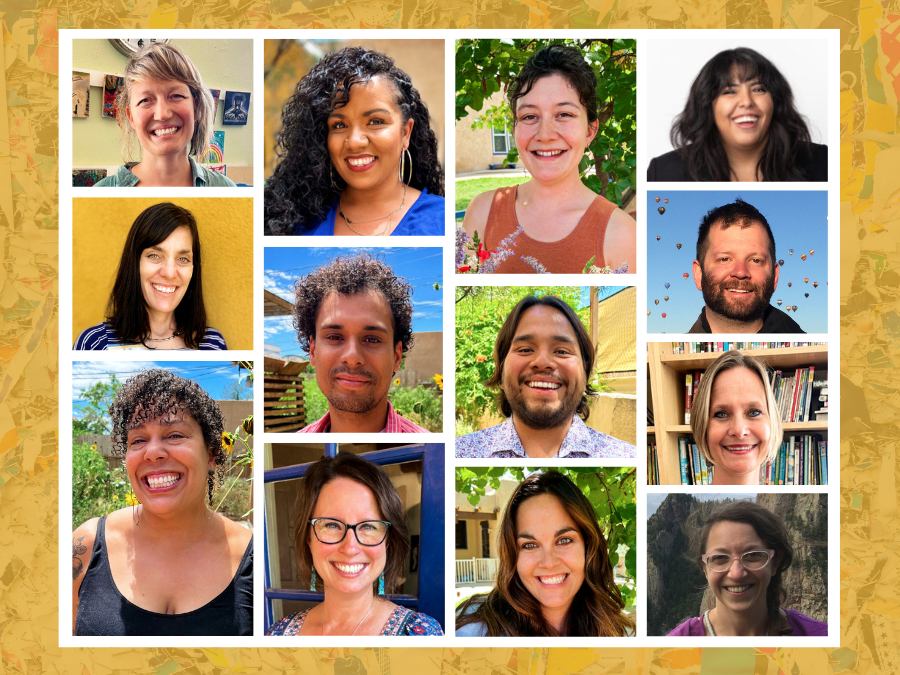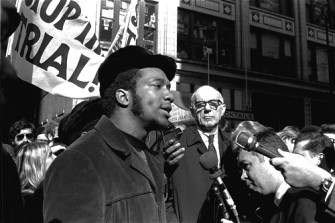
Albuquerque T4BL Study Group
Since 2020, the Zinn Education Project has hosted hundreds of Teaching for Black Lives Study Groups. Teachers study how to teach for Black lives and gain the collective strength to face right wing attacks. There is power in numbers.
We periodically spotlight study groups for you to meet. Here is one of our two groups in Albuquerque, New Mexico.
The 14 pre-k-8th-grade Escuela Del Sol Montessori educators in the study group meet once a month in person. In February, the group was excited to be joined by one of the editors of Teaching for Black Lives and ZEP team member, Jesse Hagopian.
Starting with Joy
Tanesia Hale-Jones, the group’s coordinator, opened that meeting by reading a poem, by Alice Waker:
While love is unfashionable
let us live
unfashionably.
Seeing the world
a complex ball
in small hands;
love our blackest garment.
Let us be poor
in all but truth, and courage
handed down
by the old
Spirits.
Afterward, Hale-Jones asked members to share celebrations and moments of Black joy. One educator shared that her students responded to learning Madam CJ Walker with enthusiasm and a desire to create their own inventions. Another member shared that they were reading Farming While Black, by Leah Pennimen. And another person recommended Toni Morrison: The Pieces That I Am, a documentary film about the famous writer.
A teacher said he introduced his students to the history of the banjo, and enjoyed seeing his students’ misconceptions about the instrument — “white people sitting on a porch playing country music” — disrupted and replaced with a deeper understanding of how much American music is rooted in Black musicianship and history.
Centering History
Study group members had read section two (“Enslavement, Civil Rights, and Black Liberation”) of Teaching for Black Lives for this meeting. Jesse shared that his students always love doing the COINTELPRO lesson: “They get to work with the FBI’s secret documents . . . and they’re just blown away that the FBI tried to get MLK to kill himself. The document is just breathtaking to read and changes their whole view of the civil right movement and the government.”
Following a conversation about the Black Panthers, one study group member shared their response to reading The Color Line, a lesson about how and why racial distinctions became encoded into law. “These projects that create separation and alienation were all about keeping the community from organizing and caring for one another and that still goes on today.”
One member expressed appreciation for the questions raised by Teaching SNCC: The Organization at the Heart of the Civil Rights Revolution and Claiming and Teaching the 1963 March on Washington. “I’ve been thinking about how. . .we stay in movement together and disagree. I had a really keen eye for SNCC and the 63 March on Washington. There was lots of disagreement. We need to get better at learning how to hold that without canceling each other.”
What About the Police?
An educator asked Jesse, “How can we talk about police brutality with kids of all ages?” Jesse said that one strategy is to begin with questions. “Ask students: What do you know about the police? What have you seen in the news? What questions do you have?” Jesse explained, “Let the lessons be driven by their actual questions. . . You might not have all the answers, and you might have to come back to it, or develop a lesson around those questions for the future.”
Jesse also shared with the group a story from his own pandemic parenting experience. Early in the pandemic, his son’s teacher dropped off a packet of work for the first grader to complete, including a worksheet about police. Jesse explained, “The headline of the article said, ‘Police Protect Us,’ and there were four questions my son answered — in his own way.” [See the worksheet and Jesse’s son’s answers.] Jesse suggests this experience could be turned into a teaching activity by sharing his son’s answers to the “Police Protect Us” worksheet with students, asking them to critically engage the text. He also encouraged group members to take a look at Zinn Education Project resources on teaching about policing.
My 2nd grade son got this worksheet called, “Police Protect Us.”
— Jesse Hagopian (@JessedHagopian) June 1, 2020
He read it, thought carefully about it, and then wrote his answers to the questions.#PoliceDontProtectUs pic.twitter.com/FoI9PVA1Wu


